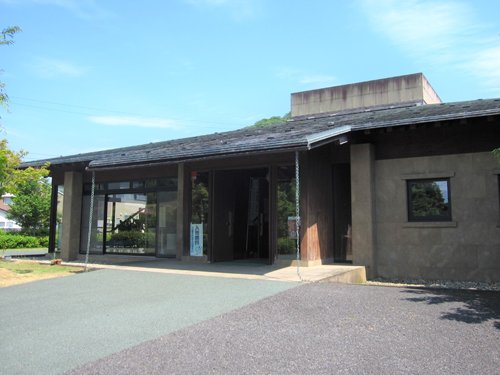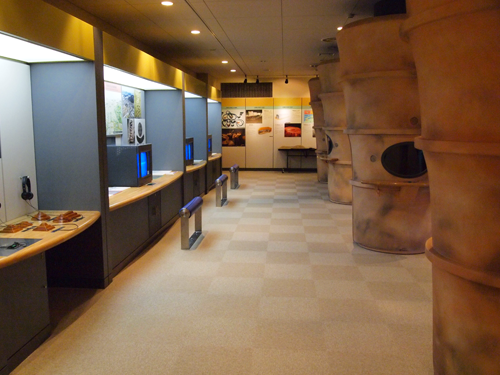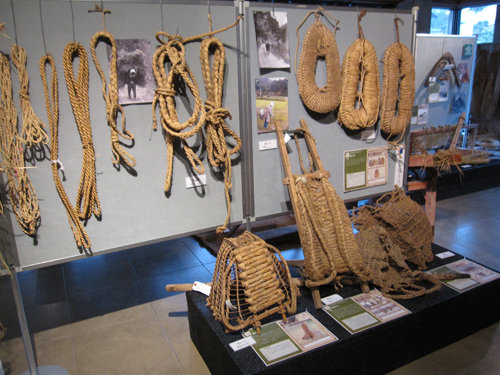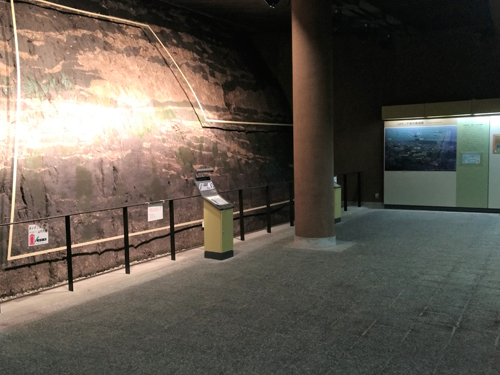What is Guidance Yamashiro no Sato?
In addition to being the information center for Yamashiro Futagozuka Kofun, this facility serves as a base for visitors looking to explore the tumuli and historic sites of the surrounding area. To provide visitors with background knowledge that will be useful when observing the kofun itself, the building contains a projection room for viewing a video about Yamashiro Futagozuka Kofun, a full-size replica of the sarcophagus-style stone chamber at Mukoyama No.1 Kofun, and panels explaining various facts about kofun. And three or four times a year, special exhibitions displaying materials related to folk customs, local authors, plants native to Fudoki, and other topics are on display in the lobby.

- Guidance Yamashiro no Sato
Yamashiro Futagozuka Kofun and the Soil Layer Observation Center
With a total length of 94 meters (150 meters if the surrounding outer embankments are included), the adjacent Yamashiro Futagozuka Kofun is Shimane’s largest tumulus and is also famous for being the first of Japan’s so-called “conjoined-rectangle tumuli.” It is believed to have been built around the middle of the sixth century as a tomb for the influential families which controlled eastern Izumo. The rear section of the kofun provides a cross-sectional view of the many layers of soil which were artificially stacked up during the building process. Although this section was destroyed around 1907 to build a firing range for the Imperial Japanese Army, it has since been restored and established as an observation center by the prefecture of Shimane.

- Exhibition hall

- Lobby Exhibition

- Soil Observation Center (Yamashiro Futagozuka Kofun)
Mt. Chausu
Referred to as Kannabi-nu in the Izumo-no-kuni Fudoki, this mountain is located not far from the Guidance Yamashiro no Sato and rises 171.5 meters above sea level. Since ancient times, people have held the belief that the gods are secluded away on Mt. Chausu. When viewed from the west, the mountain has a beautiful shape similar to that of Mt. Fuji. It was also used as a mountain fortress during the medieval period, and the remains of those walls and moats can still be seen today. The summit can be reached in about 30 minutes (partway up there is a section with steep slopes). From the top, one can see a sweeping view of the Ou Plain, which served as the backdrop for the Izumo-no-kuni Fudoki. If you would like to climb Mt. Chausu, we recommend starting from the Guidance Yamashiro no Sato.

